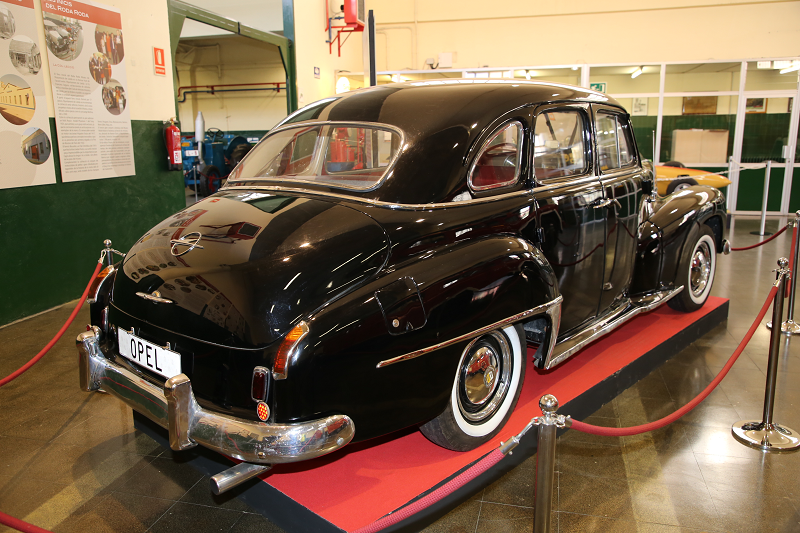The Opel Kapitän is a luxury car made in several different generations by the German car manufacturer Opel from 1938 until 1970.
The Kapitän was the last new Opel model to appear before the outbreak of the Second World War, developed during 1938 and launched in the spring of 1939 at the Geneva motor show. Production began in November 1938.
The first Kapitän was available in many different body styles, the most popular one being the 4-door saloon. 2-door coupé cabriolets were also built. The pre-war Kapitän featured a unitary body, an innovative feature for its time; it was studied by the Soviet engineers and heavily influenced the design of the GAZ-M20 Pobeda. The Kapitän inherited its 2.5-litre engine from its predecessor: in this application a maximum speed of 118 km/h (73 mph) was reported.
Civilian automobile production by Opel ceased in the Fall / Autumn of 1940, by which time 25,371 Kapitäns had been produced: a further three were assembled during 1943, giving a total production volume for the version launched in 1939 of 25,374. In addition, 2 were assembled in 1946, and one in 1947, but these were not officially recorded in the statistics.
Included in the production total were 248 of the two-seater cabriolets built for Opel by independent coach builders Gläser of Dresden and Hebmüller of Wülfrath in Wuppertal. There would, however, be no resurrection for the cabriolet Kapitäns in 1948 when the saloon version was reintroduced.












